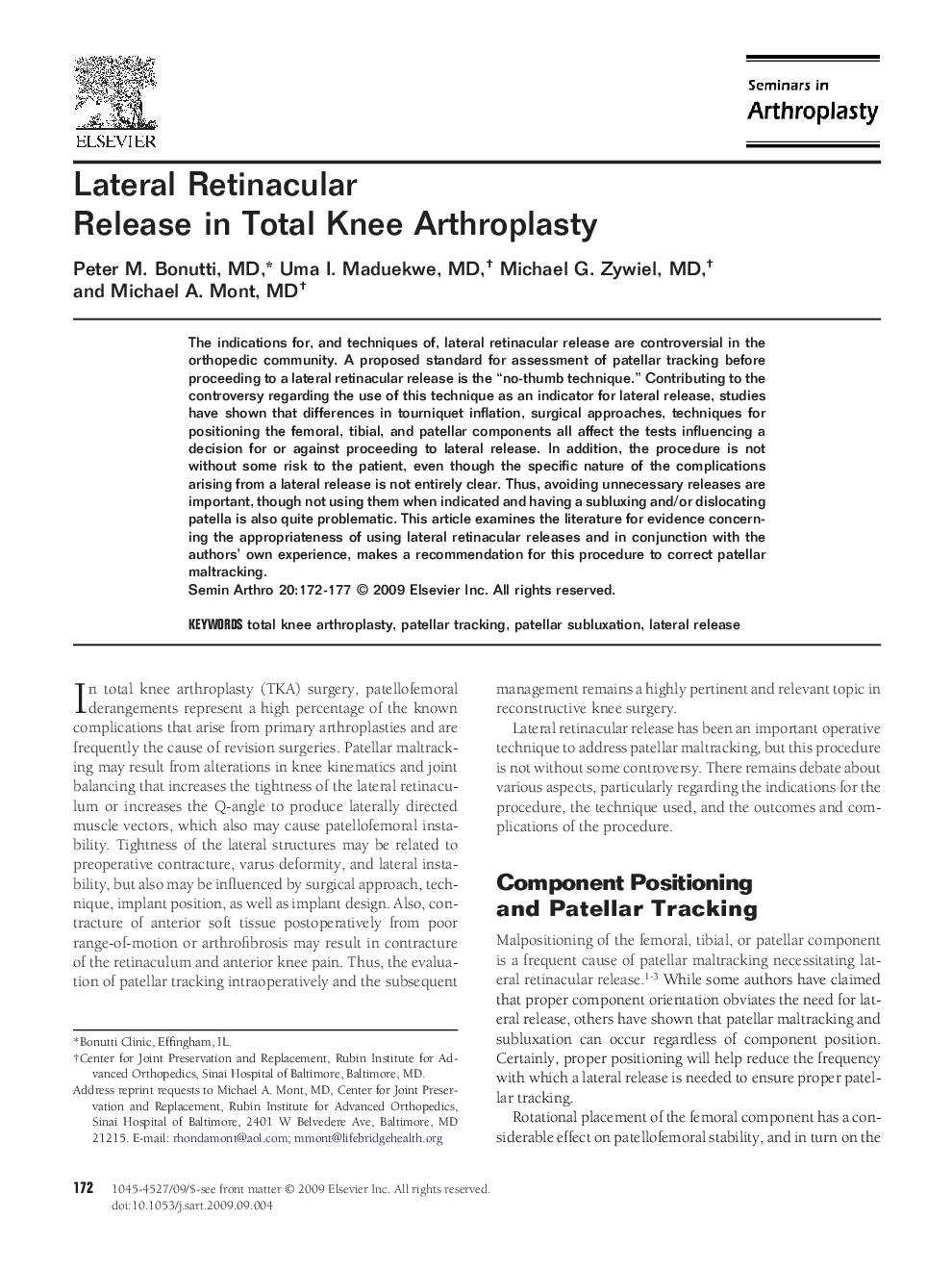| Article ID | Journal | Published Year | Pages | File Type |
|---|---|---|---|---|
| 4094219 | Seminars in Arthroplasty | 2009 | 6 Pages |
The indications for, and techniques of, lateral retinacular release are controversial in the orthopedic community. A proposed standard for assessment of patellar tracking before proceeding to a lateral retinacular release is the “no-thumb technique.” Contributing to the controversy regarding the use of this technique as an indicator for lateral release, studies have shown that differences in tourniquet inflation, surgical approaches, techniques for positioning the femoral, tibial, and patellar components all affect the tests influencing a decision for or against proceeding to lateral release. In addition, the procedure is not without some risk to the patient, even though the specific nature of the complications arising from a lateral release is not entirely clear. Thus, avoiding unnecessary releases are important, though not using them when indicated and having a subluxing and/or dislocating patella is also quite problematic. This article examines the literature for evidence concerning the appropriateness of using lateral retinacular releases and in conjunction with the authors' own experience, makes a recommendation for this procedure to correct patellar maltracking.
